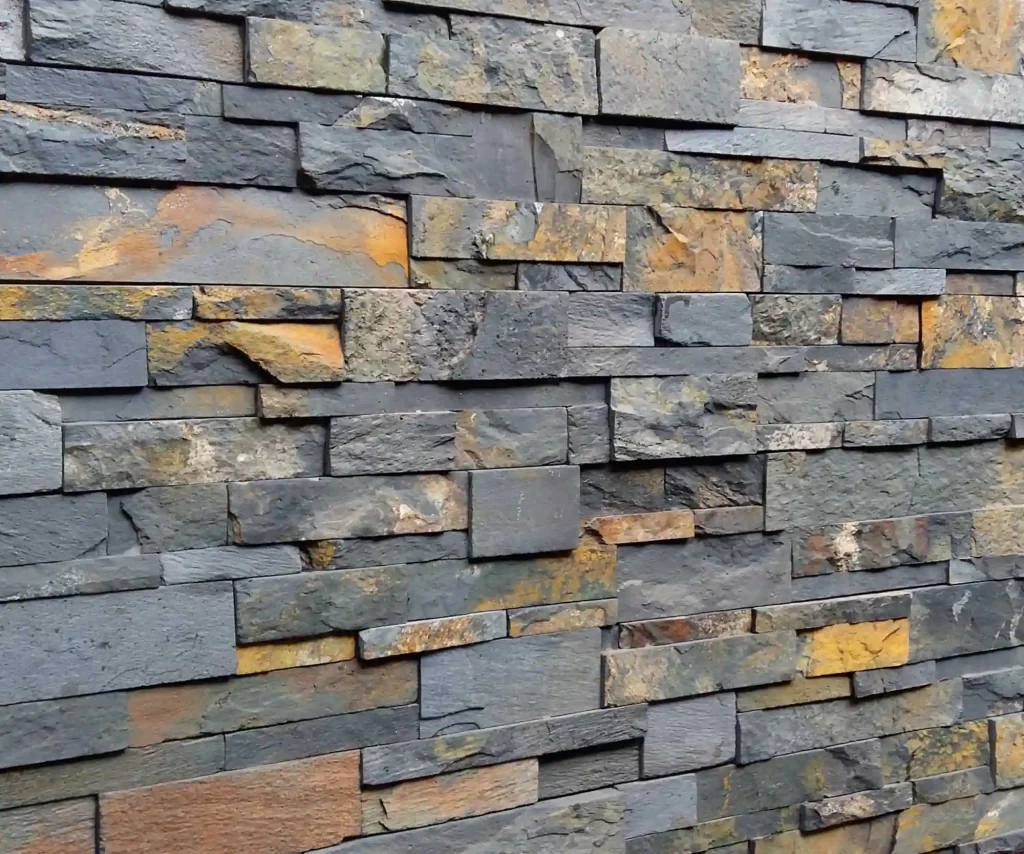What are the different types of cladding found on UK buildings? What type is best and why?
There are many different types of cladding. Not everyone who has cladding on their buildings is at risk of fire. It is important to know the differences between the types of cladding before you purchase or sell a building within a block of flats.
There are eight known different categories of cladding. We will examine each of them below and give three pros and cons for each type. Don’t forget that you can contact ASD Build if you need expert advice.
Pros and cons of the different types of cladding
Here are some of the different types of cladding you can get for your building in the UK.
1 – Stone building cladding
Natural Stone is a traditional method of cladding a building. Exterior wall cladding which has been made from stone looks good and keeps your building thermally regulated.
The pros of natural stone cladding:
- Non-porous – will not absorb moisture
- Extremely durable
The cons of natural stone cladding:
- Can be cold and unfriendly
- Especially heavy
2 – Brick based cladding
Brick cladding is just as thick and dense as stone cladding. It is distinctive in colour and does not crack in the heat or the cold. Brick based cladding will protect your building from external damage.
The pros of brick based cladding:
- Support the structural integrity of your home
- Thermal regulation of energy
The cons of brick based cladding:
- Requires washing
- Bright red colour
3 – Concrete cladding
That’s right, you can cover your entire apartment block in concrete. Concrete building cladding comes in panels. They give a smooth, sleek finish which brick and stone just can’t achieve.
The pros of concrete cladding:
- Can be moulded to fit your shape
- There are few gaps
The cons of concrete cladding:
- It can look dull
- Not typical of the countryside
4 – Wooden cladding
The earliest recorded usage of cladding was timber based. Lining the outer walls of your house with wood allows you to protect the walls from extreme weather.
The pros of wooden cladding:
- Inviting and appealing
- Easy to replace
The cons of wooden cladding:
- Highly flammable although it can be treated
- Doesn’t last as long as stone
5 – PVC building cladding
Polyvinyl compound cladding is becoming popular among commercial buildings. It is one of the cheaper forms to erect and is highly durable.
The pros of PVC building cladding:
- Protect against extreme weather
- Corrosion resistant
The cons of PVC building cladding:
- It looks man made
- It doesn’t have quite the same insulation
6 – Metal cladding
There are various types of metal cladding. As we are all aware of by now, it was ACM cladding that was used in the Grenfell Tower incident. This cladding comprised of two aluminium sheets pressed together and filled with polyethylene.
The other types of metal cladding include aluminium composite, corten and sandwich panels, and Colorbond wall cladding. Building using metal cladding is suitable for residential, mini corry, corrugated roof and wall, commercial cladding, custom projects, factories, and industrial cladding.

The pros of metal cladding:
- It’s long lasting
- Durable
The cons of metal cladding:
- That polyethylene is dangerous
- It can corrode
7 – Glass cladding
Glass cladding is typically used on high end buildings such as banks. The Louvre in Paris is famous, in fact, for being clad in glass.
The pros of glass cladding:
- Reflect UV rays
- Better for the environment
The cons of glass cladding:
- It is not the best at protecting from damage
- It needs to be cleaned once or twice a year
8 – Weatherboard cladding
Weatherboard is built out of timber. It uses reconstituted wood. This allows manufacturers to make it as dense and durable as possible.
The pros of weatherboard cladding:
- Longer lasting than timber
- All colours and shapes
The cons of weatherboard cladding:
- Prone to rotting
- Requires more maintenance than other kinds of cladding
Important Considerations When Choosing Types of Cladding
Here are the important things to consider when choosing the best type of cladding for your project:
- Style: Exterior cladding renovation or new construction is performed for visual reasons to increase a home or a building’s curb appeal. There are various options available depending on the age, shape, and style of the home or building.
- Price And Value: Cheap cladding products aren’t always a good deal. The same is true with expensive cladding. A high-priced cladding doesn’t mean getting the most durable product. It’s essential to check the features and benefits of a cladding product and to find out if the cost is reasonable.
- Energy-Efficiency And Insulation: These qualities are important in exterior cladding. Proper insulation helps reduce energy consumption for energy efficiency and improve the comfort inside the home or building.
- Durability And Lifespan: Check the quality and lifespan of the cladding system you’ll be getting. For instance, aluminium cladding has a long lifespan, good retention, and colour retention.
Which cladding is right for you?
The options are endless. Choose something that works best for you.







